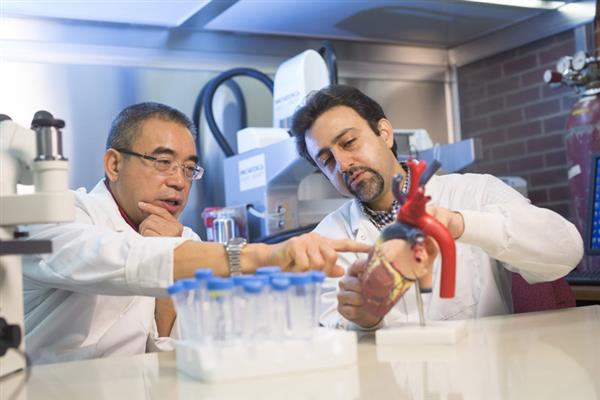Bioprinting has made the jobs of many a cardiologist far easier. From 3D printed heart valves to blood cells, many innovations have come about due to 3D printing. Now, researchers from Saskatchewan University have developed a ‘heart patch’ that medical researchers claim can re-grow and repair damaged heart tissue.
The researchers published the study in the journal Tissue Engineering. The lead researcher, Mohammad Izadifar, is a specialist in heart disease and heart disease treatments. Currently, the he is focusing his work on studying the longer-term effects of the 3D printed heart patch on rats. His research is being supported by the Canadian Institutes for Health Research. While the research has only been tested on animal physiology, he has stated that it is ready for tests on human subjects.
Countering Heart Disease With 3D Printing

“The problem is that the heart cannot repair itself once damaged from a heart attack,” explained Izadifar. “If the heart tissue dies, it is not coming back.”
After a heart attack, blood flow gets blocked to certain parts of the organ. As a result, even after recovery, the body cannot perform vital repairs on that part of the heart. The heart patch seeks to remedy this very factor. It uses an algae-based hydrogel that dissolves into the patient’s heart upon placement. The patch is composed of bio-compatible materials and has a jelly-like structure.
The patch houses stem cells and biocompatible nanoparticles that the researchers have programmed to send signals to the heart’s blood vessels. These signals prompt regrowth processes as the patch integrates its operations with that of the circulatory system. It can also create new blood vessels in the process.
Mohammad Izadifar believes that it can serve as a permanent treatment for heart attacks. The results in animal tests have proven to be promising. In terms of monitoring the results, the team had to think outside the box because the implants were invisible to medical imaging systems. With the aid of the Canadian Light Source, they were able to develop a non-invasive monitoring method.
Even though the researchers are making breakthroughs in developing the technology, there is still a massive gulf to cover. The researchers have to test on human subjects and appropriately assess the tech in terms of possible side effects. Even then, the appropriate authorities will need to conduct their own tests before they can approve it and put it on the market. However, this is still a massive leap forward and proves that the technology can work. If nothing, it proves the viability of 3D bio-compatible components are heading in the right direction.










